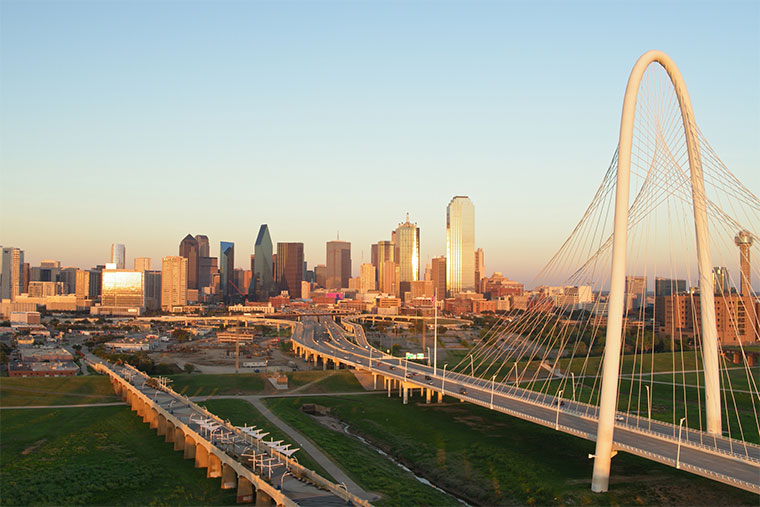By EMILY FOXHALL and KAYLA GUO/The Texas Tribune
DALLAS — Texas’ main electric grid operator has sharply increased its prediction for how much power demand will increase in coming years. If it’s accurate, the state would need to be able to provide nearly double the amount of power within six years.
Two factors led to the higher forecast: A new law allows officials to count companies’ requests for grid connections before they are finalized. There has also been a significant rise in requests from large users such as data centers, hydrogen production facilities, and oil and gas companies electrifying their operations.
In addition, the state’s population continues growing, Electric Reliability Council of Texas President and Chief Executive Officer Pablo Vegas told state lawmakers in a Senate Business and Commerce Committee hearing last week, repeating information he shared with the ERCOT board in April.
“All of that is putting together a picture of a very significant, different demand growth that is forcing us to really re-think how we’re looking at planning to make sure we can meet those needs and continue to deliver on the expectations of all Texans,” Vegas told lawmakers.
Demand on the power grid hit a record of 85 gigawatts last year, the hottest ever recorded in the state. ERCOT experts now say demand could reach around 150 gigawatts by 2030.
More than a third of the forecast growth comes from the Permian Basin, where oil and gas operators are converting operations to run on electricity instead of gas or diesel. Much is also coming from large users, such as data centers that power artificial intelligence and cryptocurrency mining. According to ERCOT, some are requesting several times more power than what the city of Lubbock now uses.
The new estimates raise crucial questions, such as whether large power users that can ramp up and down need greater state oversight, the committee’s chair, state Sen. Charles Schwertner, R-Georgetown, said in an interview. One bitcoin mining company last year reported making millions of dollars in the electricity market by selling back pre-purchased power when grid conditions became tight, which provoked the ire of some Texans who saw their power bills rise.
“I think we need to rise to the challenge of getting the needed generation onto the grid,” Schwertner said. “But there is eventually a prioritization that could be discussed, and obviously Texans — their families, their homes, their businesses — are the most important individuals, the most important clients for electricity.”
In a post on X after the hearing, Lt. Gov. Dan Patrick said the Legislature needed to “take a close look” at data centers and crypto operations. “We want data centers, but it can’t be the Wild Wild West of data centers and crypto miners crashing our grid and turning the lights off,” he wrote.
Electricity experts said the projected growth also makes clear that the grid will need more transmission lines — which are paid for by customers and take more time to build than many of the facilities that want more power.
“There’s no question there’s going to be additional need for generation,” said Michael Lozano, a communications and government affairs officer for the Permian Basin Petroleum Association. “But I think the most important thing right now that we’re trying to address is the lack of transmission.”
Previously, to plan for future transmission needs, ERCOT could only count power users that signed agreements with a utility, said Mark Bell, president of the Association of Electric Companies of Texas. House Bill 5066 allowed grid operators to count potential users without a signed agreement if the utility considered it “a serious project and very likely to interconnect,” Bell said.
Judging whether data centers will actually be built in Texas is difficult, said Katie Coleman, energy counsel for the Texas Association of Manufacturers, which represents large power users. Companies that want to build data centers could be “shopping around for places to do business,” she said, by making requests in multiple places where they might build.
Cyrus Reed, conservation director of the Lone Star Chapter of the Sierra Club, said demand could be lower if some projects never materialize. “There’s a lot of unknowns,” Reed said, “but it’s what they’re putting into their system for planning purposes.”
“If I were ERCOT, I’d rather over predict so that we have more capacity, so we don’t have a shortage,” said Michael Webber, an energy resources professor at the University of Texas at Austin. “It’s hard to say whether it’s hype or whether it’s real.”
The state’s grid has come under intense public and legislative scrutiny since a 2021 winter storm crippled its operations, causing power outages across the state for days amid freezing temperatures that left millions of Texans without lights or heat. Hundreds died.
Lawmakers responded by requiring power facilities to prepare better to operate in extreme weather. They put $5 billion into a fund to give low-interest loans to companies that planned to build gas-fueled power plants, which legislators prioritized because they can provide power quickly on demand. State regulators are accepting applications for that money now.
Sen. Nathan Johnson, D-Dallas, a member of the Senate committee, said the need to meet higher demand could push innovation with renewable energy; drive more programs for people to use less power by making their homes or businesses more efficient; and spur ways for people and small businesses to get paid for using less power in tight times.
“This massive increase in load is going to provide greater momentum behind some very good trends,” Johnson said.
___
This story was originally published by The Texas Tribune and distributed through a partnership with The Associated Press.






